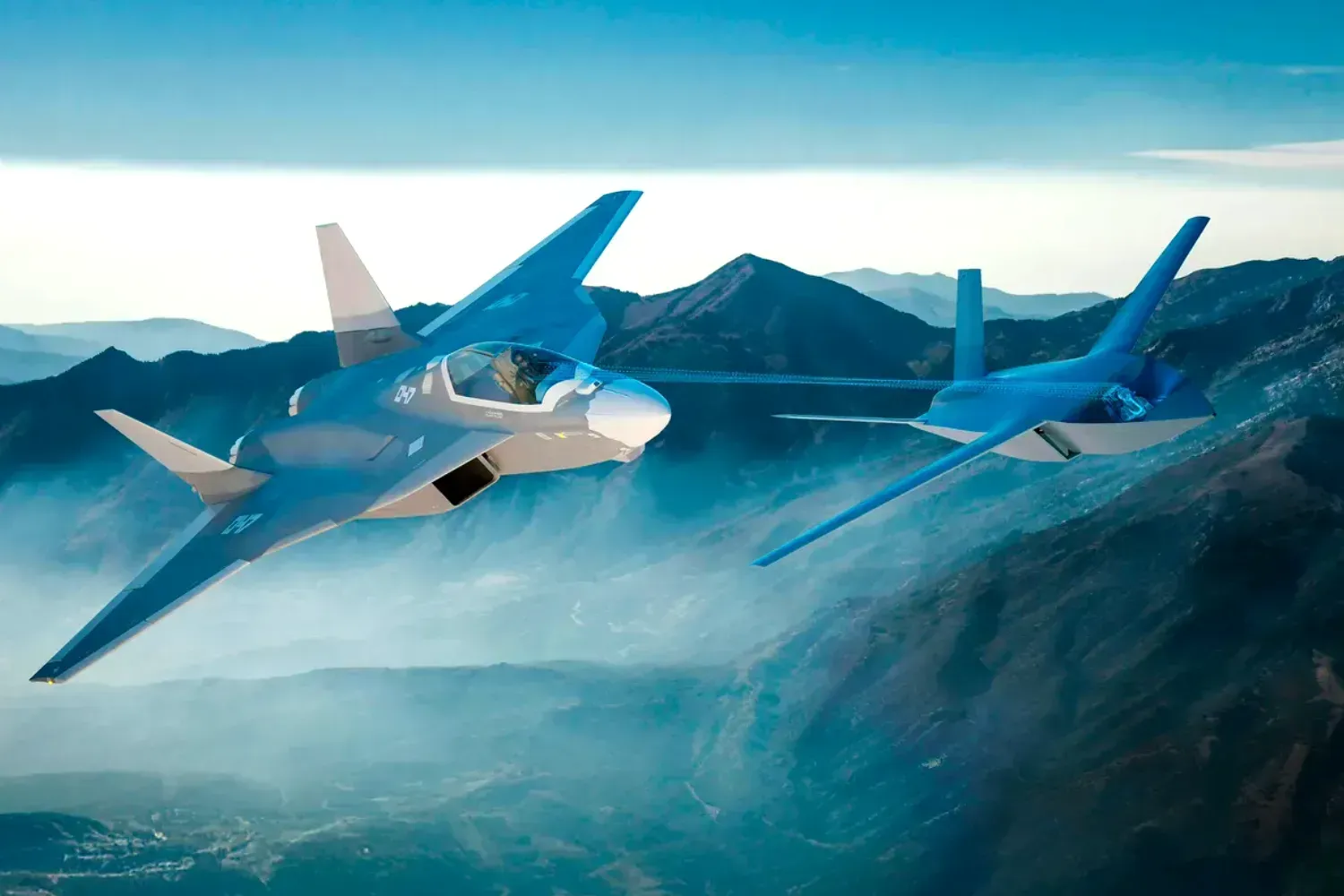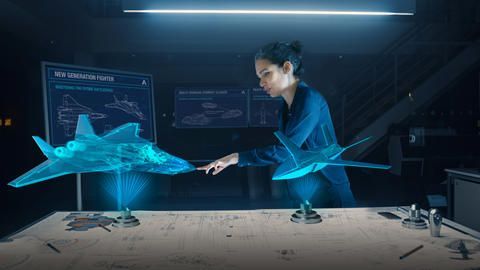A FAC REPORT ON THE BACKGROUND, UPDATE, AND CURRENT DEPLOYMENT STATUS

The Future Combat Air System (FCAS) stands as a monumental undertaking for European defence, poised to revolutionise air power and secure the continent's strategic autonomy. Far beyond a mere fighter jet, this ambitious "system of systems" integrates manned and unmanned platforms within a cutting-edge digital environment. Its complex journey, however, represents a critical test of European cooperation and technological ambition.
Europe’s Ambitious Future Combat Air System: Navigating Complexity Towards a New Era of Air Power
The Future Combat Air System (FCAS), often hailed as Europe's most significant defence project, is an ambitious endeavour designed to redefine air power and bolster European strategic autonomy. Far more than just a new combat aircraft, FCAS is conceived as an overarching "system of systems", integrating manned and unmanned platforms within a sophisticated digital environment.
Background: A Vision for Europe's Air Dominance
The origins of FCAS can be traced back to 2001 with initial studies on a new European combat aircraft. The project gained public prominence in July 2017 following a joint announcement by German Chancellor Angela Merkel and French President Emmanuel Macron. Its core purpose is to develop an advanced, networked air defence system that will progressively replace existing fleets such as the French Rafale and German and Spanish Eurofighter Typhoons from 2040 onwards.
The foundational concept of FCAS revolves around a Next Generation Weapon System (NGWS), which includes:
- A Next Generation Fighter (NGF), a sixth-generation stealth fighter at the heart of the system, capable of operating with or without a pilot.
- Remote Carriers (RCs), armed, semi-autonomous drones that will operate in concert with the NGF.
- An Air Combat Cloud (ACC), a secure IT system serving as a digital backbone to connect all components and facilitate real-time information exchange. This cloud is designed with an open architecture to integrate existing assets like the Eurofighter and A400M, as well as future systems.
Initially, France and Germany were the primary drivers of the project. Spain officially joined the collaboration in 2019, marking its inclusion as the third contributing member. More recently, Belgium became an observer to the programme in June 2023, with intentions to join by June 2025. The project is viewed as a critical step in enhancing European strategic autonomy and reducing reliance on non-European military technology, such as US imports.
Current Progress: Incremental Development Amidst Challenges
The FCAS development follows an incremental approach, divided into distinct phases and seven key development pillars, each led by a specific company.
Key Development Phases:
- Joint Concept Study (JCS): Launched in February 2019, this initial study, valued at €65 million, involved Dassault Aviation and Airbus to define the general architecture and industrial organisation.
- Phase 1A (Initial Framework Contract): Approved in February 2020, this 18-month phase was worth approximately €150-155 million and involved Dassault Aviation, Airbus, MTU Aero Engines, Safran, MBDA, and Thales. It focused on addressing main technological challenges across the programme's core elements.
- Phase 1B (Demonstrator Phase): Awarded in December 2022, this landmark contract, valued at either €3.2 billion or €3.85 billion by different sources, spans about three and a half years. Its objective is to define the technologies that will be tested in the demonstrators. Indra, FCMS, and Thales began Phase 1B work on the connected sensor suite in March 2023.
- Phase 2: This phase is planned to follow Phase 1B, with the aim for a Remote Carrier demonstrator flight in 2028 and an NGF flight in 2029.
Industrial Structure and Pillar Leadership:
- Overall National Industrial Coordinators: Dassault Aviation for France, Airbus for Germany, and Indra for Spain.
- New Generation Fighter (NGF): Dassault Aviation is the prime contractor, with Airbus serving as the main partner.
- New Generation Fighter Engine (NGFE): Safran leads the engine design and integration as prime contractor, with MTU Aero Engines as the main partner, specializing in engine services. Spain's ITP Aero also participates.
- Remote Carriers (RCs): Airbus is the prime contractor, with MBDA as the main partner. Spain's SATNUS consortium also contributes.
- Combat Cloud (CC): Airbus leads this pillar as prime contractor, with Thales as its main partner, and Indra also significantly involved.
- Sensors: Indra is the prime contractor, working with Thales and the German FCMS consortium (Hensoldt Sensors, Diehl Defence, ESG Elektroniksystem- und Logistik, and Rohde & Schwarz).
- Simulation/Consistency/Common Working Environment: This pillar's development is shared among the three partner nations.
Low Observability (Stealth): Spain's Airbus subsidiary is involved in thi national ones.
Notable Challenges and Progress: The FCAS project has faced considerable complexities and internal disagreements, particularly between France and Germany. Key challenges include:
- Workload and Industrial Leadership: Disputes over the division of labour and who holds prime contractor status for various components have caused delays. France, as the lead nation, has pushed for strengthening industrial leadership and a "rethink" of the work distribution.
- Intellectual Property Rights (IPR): The protection and sharing of intellectual property have been critical sticking points, with companies reluctant to fully disclose their proprietary know-how. While a high-level agreement on principles was signed in December 2019, more detailed contractual fixes are still needed.
- Export Policy: Divergent national arms export policies, particularly between France and Germany, complicate the project's long-term economic viability, as export sales are crucial for recouping investment.
- Political Will and Coordination: Procedural inconsistencies and political ambiguities, such as the German Bundestag linking FCAS funding to progress on the Main Ground Combat System (MGCS) tank project, have also introduced delays.
Despite these hurdles, significant progress has been made, including the successful negotiation and award of the Phase 1B contract. French defence procurement agency DGA has taken on the management of the programme to help streamline oversight. Furthermore, an ethics committee involving Airbus and the Fraunhofer Institute was established in 2019 to ensure ethical and legal "guard rails" for the use of new technologies, particularly AI, in the system, emphasizing human responsibility and control.
Deployment Status: The Road Ahead and Competitive Landscape
The FCAS project is officially scheduled to be ready for deployment by 2040. However, industry figures such as Dassault Aviation CEO Eric Trappier have suggested that a more realistic timeframe for the NGF's rollout might be closer to 2042-2045. The first flight of the NGF demonstrator is currently anticipated in 2029, with Remote Carrier demonstrators flying in 2028. Some sources still reference 2027 as the target for the first demonstrator flight.
FCAS operates in a competitive landscape, notably with the UK-led Global Combat Air Programme (GCAP), previously known as Team Tempest. GCAP, a trilateral partnership involving the UK, Italy, and Japan, aims to field its own sixth-generation fighter by the mid-2030s, with a demonstrator flight by 2027. The existence of two parallel, similarly ambitious combat aircraft programmes in Europe is viewed by many as sub-optimal, potentially hindering the development of a unified European defence industrial base and increasing competition in export markets.
While some observers suggest a future merger between FCAS and GCAP could bring significant benefits in terms of industrial synergies and economies of scale, many sources indicate this is difficult and unlikely given persistent structural rivalries, particularly between Dassault and BAE Systems, and the complexities introduced by Brexit. Italy, initially a participant in the Tempest/GCAP program, also sees challenges in merging the two initiatives.
The FCAS is not merely about developing a new fighter; it's about forging a digitally integrated, multi-domain combat force capable of operating in highly contested environments. The project aims to develop and cultivate technological excellence within Europe that will have an impact far beyond the military sector, potentially driving innovations in areas like secure European cloud services and autonomous flight control for civilian use. Its success is seen as a litmus test for Europe's capacity for security policy cooperation and its ability to prioritise collective interests over national ones.





